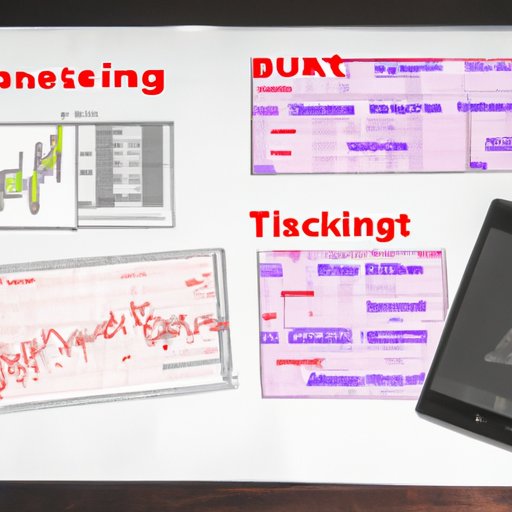Introduction
Automated trading systems are computer programs designed to automatically enter and exit trades based on predetermined criteria. They can be used to trade stocks, futures, and currencies, as well as other financial instruments. Automated trading systems can provide significant benefits over manual trading, including improved accuracy, speed, and consistency.
In this article, we will explore how to build an automated trading system. We will cover everything from designing the trading strategy to choosing the right tools and resources, and also explain different types of automated trading strategies and their risks.

Steps to Building an Automated Trading System
The process of building an automated trading system can be broken down into several steps:
Designing the Trading Strategy
The first step in building an automated trading system is to design the trading strategy. This involves deciding which markets to trade, what type of orders to use, and when to enter and exit trades. There are many different types of trading strategies, such as momentum-based strategies, mean reversion strategies, and arbitrage strategies.
Choosing the Right Tools and Resources
Once the trading strategy has been designed, the next step is to choose the right tools and resources for implementing it. This includes selecting the programming language, trading platform, and historical data. All of these components must be carefully chosen in order to ensure the system runs efficiently and accurately.
Testing and Validating the System
Before deploying the system, it is important to test and validate it. This involves backtesting the system, paper trading, and live testing. Backtesting involves using historical data to evaluate how the system would have performed in the past. Paper trading involves simulating trades with actual market data without actually placing any real trades. Live testing involves running the system in a live trading environment.

Types of Automated Trading Strategies
There are many different types of automated trading strategies that can be used. Here are some of the most common ones:
Momentum-Based Strategies
Momentum-based strategies involve buying assets that are rising in price and selling assets that are falling in price. These strategies are based on the idea that prices tend to move in the same direction over short periods of time.
Mean Reversion Strategies
Mean reversion strategies involve buying assets that are below their long-term average price and selling assets that are above their long-term average price. These strategies are based on the idea that prices tend to revert to their long-term averages over time.
Arbitrage Strategies
Arbitrage strategies involve taking advantage of price discrepancies between different markets. These strategies take advantage of situations where the same asset is traded at different prices in different markets.

Necessary Tools and Resources for Automated Trading
In order to implement an automated trading system, certain tools and resources are necessary. Here are some of the most important ones:
Programming Language
A programming language is needed to write the code for the trading system. Popular languages for automated trading include Python, R, and C#.
Trading Platform
A trading platform is needed to execute trades. Popular platforms for automated trading include MetaTrader 4 and NinjaTrader.
Historical Data
Historical data is needed to backtest the trading system. This data can be obtained from a variety of sources, such as brokers and data vendors.
Demonstrating How to Test and Validate Automated Trading Systems
Testing and validating an automated trading system is an essential part of the development process. Here are some of the most common methods for testing and validating automated trading systems:
Backtesting the System
Backtesting involves using historical data to evaluate how the system would have performed in the past. This allows traders to determine if the system is profitable before risking real money in a live trading environment.
Paper Trading
Paper trading involves simulating trades with actual market data without actually placing any real trades. This allows traders to gain experience with the system and refine it before going live.
Live Testing
Live testing involves running the system in a live trading environment. This allows traders to evaluate the system’s performance in real-time and make adjustments as needed.
Risks and Drawbacks of Automated Trading
Although automated trading systems can provide many benefits, they also come with certain risks and drawbacks. Here are some of the most common ones:
Market Volatility
Automated trading systems can be affected by sudden changes in market conditions. This can cause the system to produce inaccurate signals or even trigger stop losses.
Over-Optimization
Over-optimizing a trading system can lead to poor results in real-world trading. This is because the system may be optimized for the past, but not for future market conditions.
Poor Execution
Poor execution can occur when the system is unable to place orders in a timely manner due to slow internet connections or latency issues. This can result in missed opportunities or worse.
Conclusion
Building an automated trading system can be a complex process. It requires careful planning and a solid understanding of the trading strategy, tools and resources, and testing and validation processes. Different types of automated trading strategies come with their own risks and drawbacks, so it is important to understand them before implementing a system.
By following the steps outlined in this article, you should be able to successfully build an automated trading system that meets your needs. With the right tools and resources, and proper testing and validation, you can confidently deploy your system and start trading.
(Note: Is this article not meeting your expectations? Do you have knowledge or insights to share? Unlock new opportunities and expand your reach by joining our authors team. Click Registration to join us and share your expertise with our readers.)
